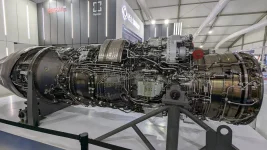- Views: 5K
- Replies: 27

In a move that could reshape India's indigenous fighter jet program, Russia has offered to supply a cutting-edge turbofan engine for the Advanced Medium Combat Aircraft (AMCA). This offer includes a crucial Transfer of Technology (ToT) element, aligning with India's ambition to bolster its domestic defence industry.
The proposed engine is an advanced derivative of the Klimov RD-33, currently powering India's MiG-29 fighters. This new iteration will incorporate fifth-generation technology from Russia's AL-41F1S engine, which drives the Su-35 fighter. Developed by Russia’s ODK Klimov, it boasts a maximum thrust of 110 kN, precisely matching the specifications set by India’s Defence Research and Development Organisation (DRDO).
Key features of the engine include a gas generator derived from the AL-41F1S and elements from the AL-51 engine, effectively making it a compact version of the Izdeliye 177S. It promises enhanced reliability, an improved thrust-to-weight ratio, and reduced maintenance demands, crucial for a fifth-generation stealth fighter like the AMCA.
This offer presents India with a significant decision. While the Indian Air Force (IAF) and DRDO have been primarily engaging with Western engine manufacturers like Safran, Rolls-Royce, and GE, Russia's proposal adds a new dimension to the AMCA's development.
However, it's important to note that the Russian engine is still in the conceptual stage, with no prototype yet developed. In contrast, India is reportedly in advanced talks with Safran for a potential co-development agreement, with an announcement possibly coming as early as 2025.
This presents a dilemma for India. Balancing the promise of advanced technology and ToT from Russia against the more mature development programs of Western companies will be a key challenge for Indian policymakers. The final decision will have significant implications for the AMCA program and India's strategic defence partnerships.



